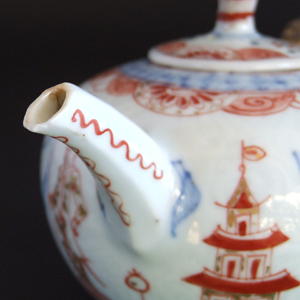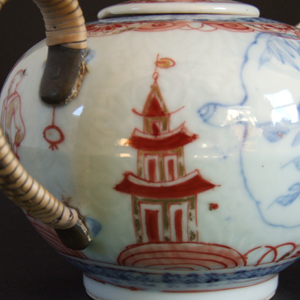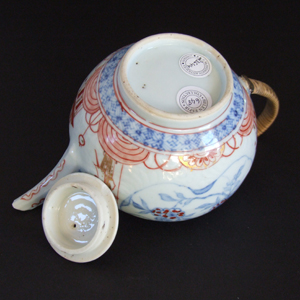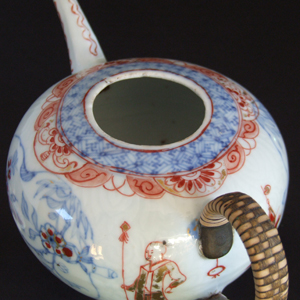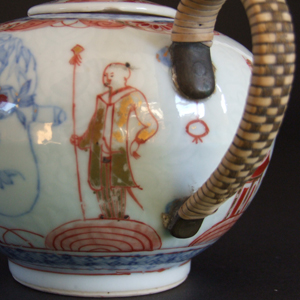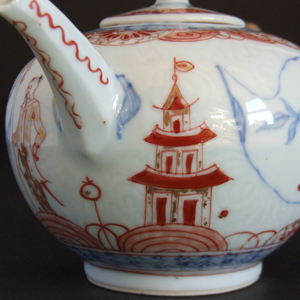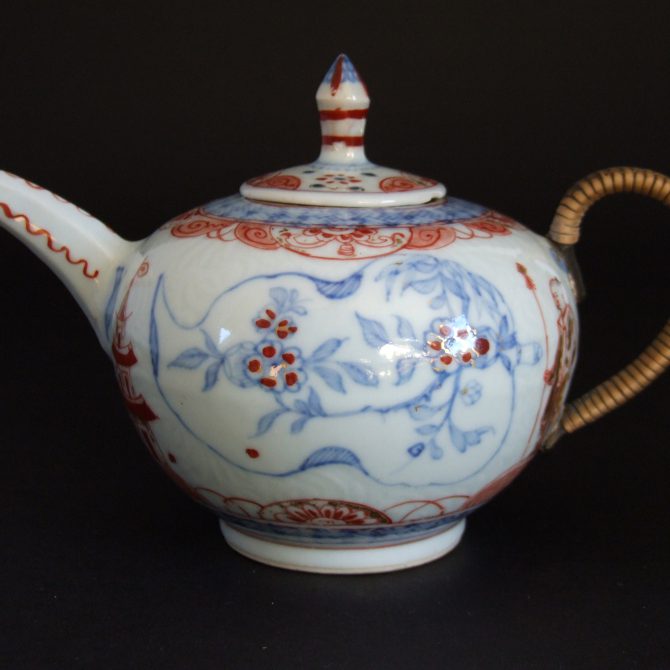
YONGZHENG 1723 – 1735 Chinese Porcelain with London Decoration
A Chinese Blue and White Porcelain Teapot with London Decoration, Yongzheng Period 1723-1735, the London Decoration c.1725-1740. The Chinese Decoration of Leaf Shaped panels with Flowering Plants is Done in the `Pencilled` Style (without a blue wash in filling), it is Characteristically in a Pale Silvery Tone of Cobalt Blue.
There are a large number of London and Dutch decorated porcelain of this type. The colours added turned a rather pale blue and white teapot into an imari teapot. The over-decoration on this piece is unusually restrained.
SOLD
- Condition
- The handle replaced, fritting to the finial, the spout with a chip and a crack.
- Size
- Length : 19 cm (7 1/2 inches)
- Provenance
- James Norbury, Portobello Road, London, 27th March 1998. The Helen Espir Collection of European Decorated Chinese Export Porcelain : "a member of the Oriental Ceramic Society and collector, with her husband. Having made a typical collection of Song and provincial Ming blue and white, they decided to concentrate on what used to be called `clobbered` porcelain. She is the author of the standard work on the subject, European Decoration on Oriental Porcelain,2005, the first to examine the work of European decorators on Chinese porcelain throughout the eighteenth and nineteenth centuries, focusing on enamellers in Holland, Germany and England. She has learned Chinese." From Provenance ; Collectors, Dealers & Scholars : Chinese Ceramics in Britain & America (Roy Davids, Dominic Jellinek, Privately Printed, 2011. ISBN 978-0-9570148-0-0).
- Stock number
- 23644
Information
Japanese Imari Porcelain :
Imari Porcelain is the European collectors` name for a type of Japanese Porcelain made in the town of Arita, in the former Hizen Province, north western Kyūshū, and exported via the port of Imari, specifically for the European Export trade. Imari was simply the trans-shipment port for Arita wares, no porcelain was made there. The kilns at Arita formed the heart of the Japanese Porcelain industry, which developed in the early 17th century. Although Imari originating in Japan the tern is used to describe a whole range of ceramics from all over the world, they are all linked by their bright distinctive palette of blue, red and gold. The cobalt that created the blue was added prior to glazing, while the iron-oxide red and the gilding were applied after glazing.
